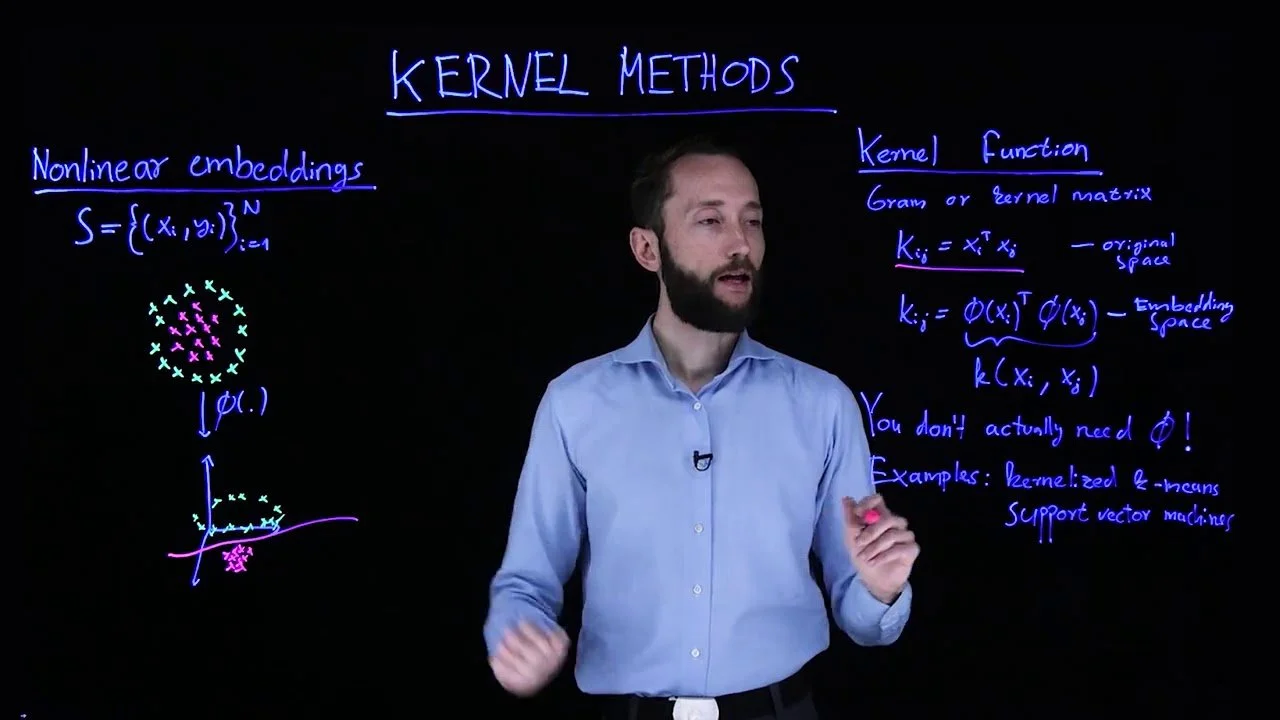QML That Works: Kernel Methods and Feature Maps in Real AI Pipelines
Peter Wittek, a professor at the University of Toronto, lectures on Quantum Machine Learning and kernel methods.
Credit: Peter Wittek and Quantum ML on YouTube
Where “quantum ML” earns its keep—without the hype
Much of “quantum ML” reduces to kernels—mappings of data into high-dimensional feature spaces where simple boundaries suffice. Seminal work (Havlíček et al.) showed quantum devices can define and estimate kernels that are hard to compute classically, at least for contrived distributions. Schuld and colleagues clarified how data encoding governs expressivity, setting expectations for when quantum kernels help and when strong classical methods still win. This literature reframes the near-term opportunity: use quantum circuits to produce embeddings or kernel matrices that, when fed to classical models, deliver measurable gains on specific datasets—not sweeping advantage claims.
Tooling has matured accordingly. Qiskit Machine Learning exposes quantum kernel estimators and trainers that slot into scikit-learn workflows; tutorials walk through building a kernel matrix and handing it to SVMs, kernel ridge, or clustering algorithms. The upshot is a test-and-verify culture: pick a feature map aligned to your data structure, instrument for noise, and compare against strong baselines.
Commercially, the sweet spot is feature-engineering-heavy domains: chem-informatics descriptors, small-data regimes with tricky boundaries, or compact anomaly signatures. Because the rest of the pipeline remains classical—data prep, cross-validation, drift monitoring, model registry—teams can trial quantum kernels without a full platform rewrite. Governance is tractable, too: versioned circuits, fixed seeds, audit trails, and roll-back when a new embedding underperforms. Buyers respond to components that behave like any other governed model block—auditable, reproducible and easy to swap out.
The bar is—and should be—high. Classical ML is excellent. That’s the point: quantum needs to earn its seat with evidence, not slogans. Kernels offer the cleanest path today: narrow, inspectable and measurable.
